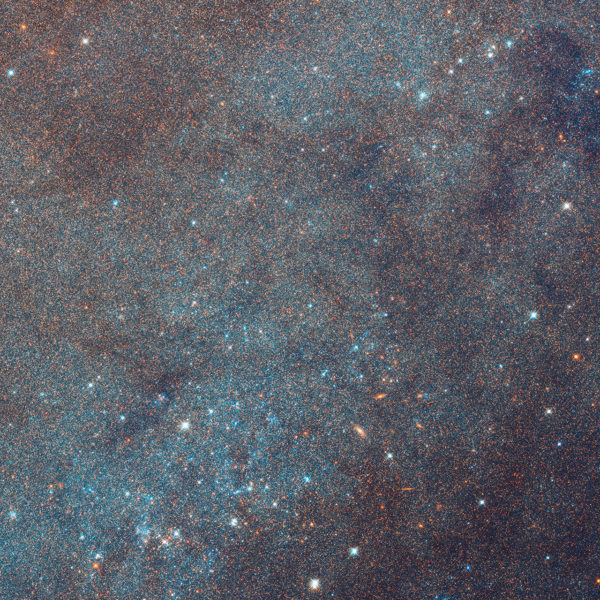“He who would search for pearls must dive below.” -John Dryden
If you want to know what types of stars are found all throughout a galaxy, looking at our own simply won't do: too much of it is obscured by the plane and our position within it. But there's an even more impressive galaxy -- Andromeda -- just 2.5 million light years away. And thanks to the power of the Hubble Space Telescope, we've not only resolved individual stars within it, we've resolved over a hundred million of them.
 Closeup of a large region of the Andromeda galaxy's disk, containing hundreds of open star clusters (identifiable as bright blue sparkles). Image credit: NASA, ESA, J. Dalcanton, B.F. Williams, L.C. Johnson (University of Washington), the PHAT team, and R. Gendler.
Closeup of a large region of the Andromeda galaxy's disk, containing hundreds of open star clusters (identifiable as bright blue sparkles). Image credit: NASA, ESA, J. Dalcanton, B.F. Williams, L.C. Johnson (University of Washington), the PHAT team, and R. Gendler.
But when we look towards the center versus at the outskirts of the disk, or even into the halo, we find something very, very different: older, redder, fainter and less-evolved stars. Even more spectacularly: beyond them, a rich slew of distant galaxies, visible out to distances exceeding a billion light years.


Interesting to note the visibility of other galaxies through Andromeda in the closeup photo, lower right of photo, reddish appearance.